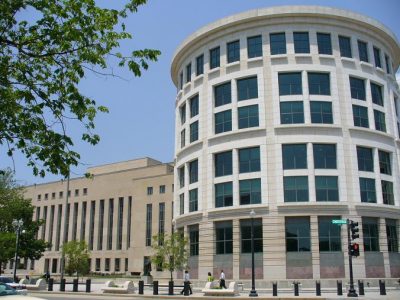
The D.C. Circuit Court of Appeals heard oral arguments about Trump’s Affordable Clean Energy (ACE) rule last week. The ACE rule is a feeble substitute for Obama’s Clean Power Rule, which was Obama’s signature climate action regulating power plants. The argument went badly for the Trump folks. Even Judge Justin Walker, a 38-year-old whose main qualification was being a protégé of Mitch McConnell, was skeptical about the ACE rule.
The Trump ACE rule was pretty much designed to achieve as little actual emission reduction as possible, while still maintaining the pretense that EPA was taking action. My earlier post and one by UCLA’s Cara Horowitz analyze the numerous faults with the Trump rule. At best, it would produce a pitiful 3% decrease in carbon emissions from coal-fired power plants and no iemission reductions at all from gas-fired plants.
As I explained back when the ACE rule came out, it is based on a very narrow reading of the Clean Air Act. Under this view of the Act, EPA could only consider technological changes at each individual coal generator that decrease the rate of emissions without changing fuels. The reason for adopting this narrow view is that it provided the basis for rejecting Obama’s plan. Obama’s plan relied on fuel changes (using natural gas rather than coal), reducing utilization of coal plants while replacing them with renewables, and emissions trading between states. Requiring any of these measures would have allowed for much deeper emissions cuts, to the chagrin of the coal industry. But having adopted this very restrictive interpretation of the statute, the Trump EPA found itself forced to reject a number of features of the ACE plan that would have reduced costs and eliminated counterproductive outcomes. To top it all off, the ACE rule gave coal plants the option of doing nothing at all if even token efforts to reduce emissions were too burdensome.
Those choices came back to haunt the Trump EPA at oral argument. The judges wondered why the Trump EPA had avoided obvious cost-reduction measures like allowing companies to shift to renewables. They also wondered why the agency hadn’t set any actual emission reductions. And how, they wondered, could a court possibly determine whether a state plan was or was not compliant with the rule? Even Judge Walker was puzzled about that one.
A bigger issue lurks in the background: Does the statute prevent EPA from considering a much broader set of tools, such as requiring states to increase the use of renewable energy on their power grids?The Obama Clean Power Plan made use of these broader measures. Judge Walker seemed to think that the “major questions” doctrine would apply — an exception to judicial deference that he appeared not to understand very well. The other judges may take a different view. That could make a difference in terms of what a future President might do, but it seems clear that the Clean Power Plan itself is dead. Everyone on both sides of the argument agreed that it was now hopelessly out of date due to changes in the electricity sector and should not be revived in its current form.
It seems unlikely, based on the oral argument, that the D.C. Circuit will uphold the ACE rule. It may not end up ever ruling on the issue. If Biden wins, he’s likely to ask the court to put the case on hold while a new EPA considers its next steps. Even if Trump wins, however, it seems pretty plain that the court will require a redo of some kind.
The post Trump’s ACE Rule Hits a Judicial Speed Bump appeared first on Legal Planet.
By: Dan Farber
Title: Trump’s ACE Rule Hits a Judicial Speed Bump
Sourced From: legal-planet.org/2020/10/13/trumps-ace-rule-hits-a-judicial-speed-bump/
Published Date: Tue, 13 Oct 2020 14:40:40 +0000
Vist Maida on Social Me
Website Links
Maida Law Firm - Auto Accident Attorneys of Houston, by fuseology

No comments:
Post a Comment